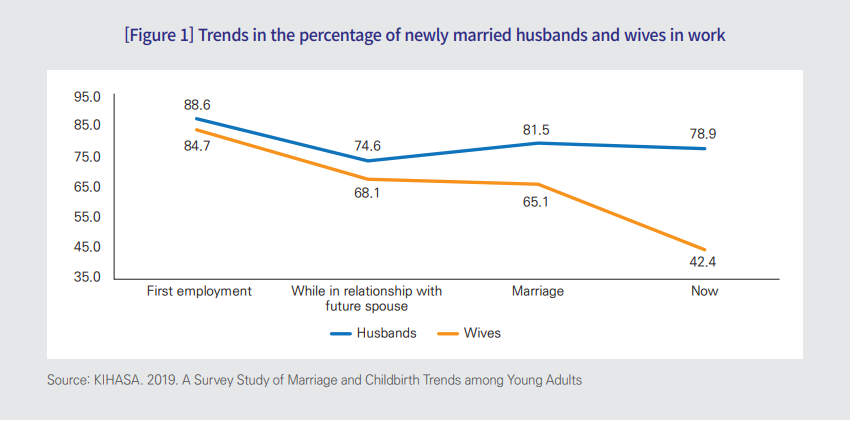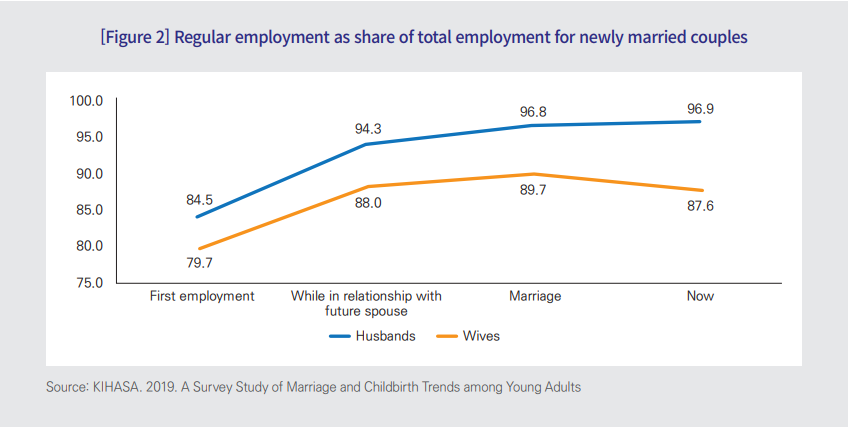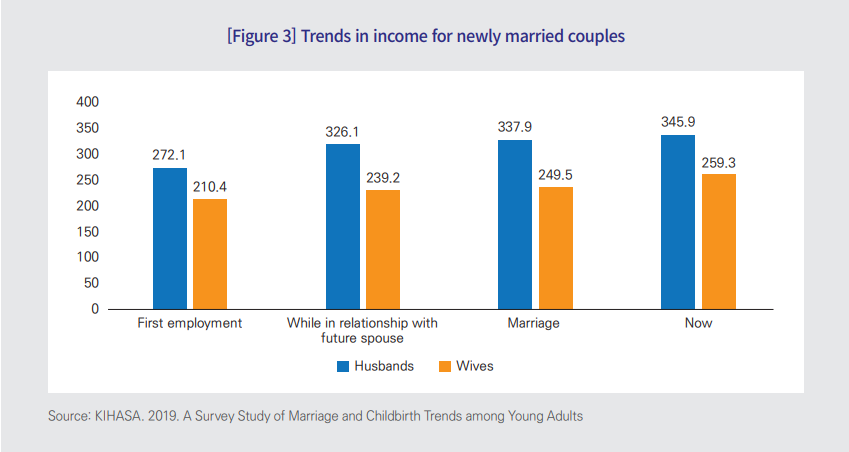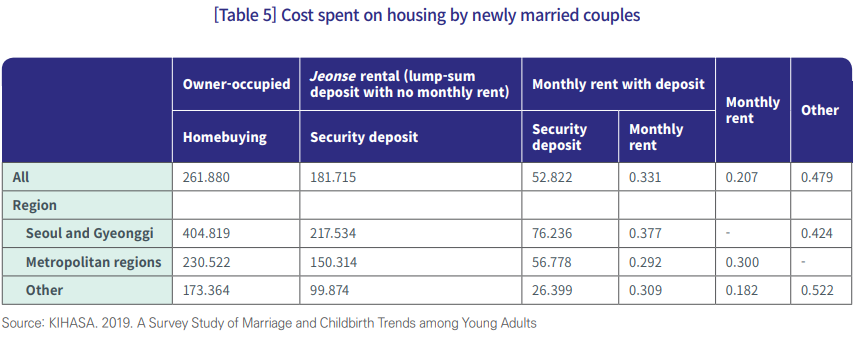Press Release
Policies Helping First-time Homebuyers among Newlyweds May Raise Fertility Rates
- Date 2021-11-26
- Hits 627
Housing policies to help couples where both the husband and wife are first-time hombuyers, like policies to ensure job stability and time for child care, may help raise fertility rates
|
■KIHASA has published Health and Welfare Issue & Focus, No. 411, "Newly Married Couples: Their Employment Status, Housing Tenure and Number of Children."
■Cho Sungho, associate research fellow at the Center for Population Impact Assessment at KIHASA, said, "I conducted a study with a sample of 1,779 pairs who were in their first 7 years of marriage, asking them retrospective questions about the changes they had in their employment and housing at major life-cycle milestones in order to look into what impact employment status and housing tenure types has had on their fertility decisions. It turns out that a significant proportion of the wives has left the labor market after marrige. The number of children was highest for couples where the husbands had stable jobs and the wives were in temporary employment, which indicates that job stability and ensuring time for child care are crucial factors affecting the couples' fertility decisions."
■He also said, "In a country like Korea where having children remains strongly correlated with marriage, housing is a highly significant factor in fertility decisions. In this regard, housing policies need to help couples where both the husband and wife are first-time homebuyers, regardless of their income and debt levels, have easy access to loans they need to transition to homeownership."
Summary
|
1.Changes in occupational status
■The employment rate of the husbands did not much vary across differnt points of time, from the time of their first employment until the time of the survey. However, the wives saw rapid declines in employment rate since the time of their first employment before marriage, and the decline was especially marked after marriage[Figure 1].

■For the husbands, regular employment as a proportion of total employment trended up over time, from 84.5 percent at the time they landed their first job to 96.9 percent at the time of the survey. For the wives, the proportion of those in regular employment was 79.7 percent at the time of their first employment and rose to 87.6 percent at the time of the survey. In comparison, regular employees accounted for 63.6 percent of unmarried men and 62.6 percent of unmarried women in employment aged 20 to 44 [Figure 2].

■The average monthly income of both the husbands and wives increased after marriage but the difference between them has widened from 0.617 million won from their first job to 0.868 million won at the time of the survey [Figure 3]. In comparison, the average monthly income of unmarried people aged 20 to 44 was much lower at 2.392 million won for men and 1.479 million won for women.

2. Residence
■Of the coupled surveyed, those who lived in an apartment (or a mixed-use apartment) accounted for 64.7 percent at the time of marriage, 70.4 percent at the time of their first child's birth and 69.9 percent at the time of the survey [Table 3].

■The homeowner-occupancy rate of the couples surveyed has increased over time after marriage.

■There were substantial regional disparities in how much the newly married couples spend on their housing. The difference in the average cost spent on housing between Seoul and Gyeonggi regions on the one hand and other regions on the other was 231.45 million won in the case of owner-occupied tenure and 117.66 million won in the case of jeonse tenure.

3. The Number of Children
■Of those couples in their first year of marriage, 2.1 percent had one child; 89.6 percent of those in their fifth year of marriage had one child or more; 93.8 percent of those in their seventh year of marriage had one child or more [Table 6].

■53.9 percent of the couples where the husband was in a permanent position and 52.2 percent of the couples where the husband is in self-employment had two or more children [Table 7].

■42.9 percent of the couples where the wife is in a permanent position, 53.9 percent of those where the wife is in a temporary position, and 42.4% of those where the wife is in self-employment had two or more children [Table 8].

■Of those living in an owner-occupied home among the couples surveyed, 56.8 percent had two or more children; 50.0 percent of those living in a jeonse rental home had one child; 60.5 percent of those living in a wolse (deposit plus monthly rent) had two or more children; 57.1 percent of those living in rent-ree housing had two or more children. The average number of children born to the couples surveyed varied with the type of tenure, from 1.50 for owner occupants to 1.37 for jeonse renters, and from 1.53 for monthly renters to 1.46 for rent-free dwellers [Table 9].

4. Concluding Remarks
■This brief examined couples in their early years of marriage, as to how many children they had and how their occupational status and housing tenure varied in different points of time.
■The wives of the couples surveyed saw rapid declines in employment rate since the time of their first employment before marriage, and the decline was especially marked after marriage. Therefore, work-family balance policies need to be implemented with added driving force to help married women stay in the labor force.
■The overall quality of employment was found to be higher in newly married couples than in unmarried men and women, indicating the matching of men and women having become increasingly polarized in the marriage market.
■Housing is a highly significant factor in fertility decision in Korea. In thi regard, housing policies need to help couples where both the husband and wife are first-time homebuyers, regardless of their income and debt levels, have easy access to loans they need to transition to homeownership.

